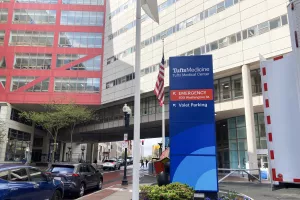
Tufts Medical Center CardioVascular Center
Monday
8:00 am - 5:00 pm
Tuesday
8:00 am - 5:00 pm
Wednesday
8:00 am - 5:00 pm
Thursday
8:00 am - 5:00 pm
Friday
8:00 am - 5:00 pm
Saturday
Closed
Sunday
Closed
800 Washington St., Proger Building at Floating Bridge, 6th floor, Boston, MA 02111
Getting here
800 Washington St. Proger Building at Floating Bridge, 6th floor Boston MA 02111 US
Services offered at this location